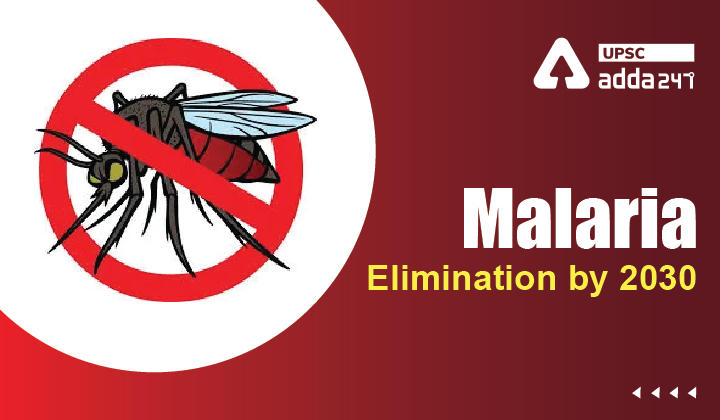Table of Contents
Malaria elimination UPSC: Relevance
- GS 3: Issues relating to development and management of Social Sector/Services relating to Health, Education, Human Resources.
Malaria in India: Context
- Recently, World Malaria Day 2022 was commemorated where the Ministry of Health and Family Welfare said that the Government will soon launch a comprehensive drive to eliminate TB and Malaria.
Malaria day 2022: Key points
- World Malaria Day 2022 theme is “Harness innovation to reduce the global malaria disease burden and save lives.”
- India has made remarkable progress in reducing the malaria incidence and deaths.
- Government efforts have resulted in 86.45% decline in malaria cases and 79.16% reduction in malaria related deaths in 2021 as compared to 2015.
- Moreover, 124 districts in the country have reported ‘zero malaria case’’.
About Malaria
- Malaria is a potentially life-threatening disease caused by parasites (Plasmodium vivax, Plasmodium falciparum, Plasmodium malariae and Plasmodium ovale) that are transmitted through the bite of infected female Anopheles mosquitoes.
- Read more about malaria here.
Steps taken for malaria elimination
Steps taken by WHO
- WHO Global technical strategy for malaria 2016-2030: provides a technical framework for all malaria-endemic countries and intended to guide and support regional and country programmes as they work towards malaria control and elimination.
- The Strategy sets ambitious but achievable global targets, including:
- reducing malaria case incidence by at least 90% by 2030;
- reducing malaria mortality rates by at least 90% by 2030;
- eliminating malaria in at least 35 countries by 2030;
- preventing a resurgence of malaria in all countries that are malaria-free.
- WHO Global Malaria Programme: coordinates WHO’s global efforts to control and eliminate malaria.
- It is supported and advised by the Malaria Policy Advisory Committee (MPAC), a group of global malaria experts appointed following an open nomination process.
- E-2025 Initiative: based on the successes of the E-20 initiative (aimed at eliminating malaria in 21 countries across five regions).
- Aim: WHO identified 25 countries having the potential to stamp out malaria within a 5-year timeline (by 2025).
Steps taken by India to eliminate malaria
- National Strategic Plan for Malaria Elimination (2017): shifted focus from Malaria control to elimination and provided a roadmap to end malaria in 571 districts out of India’s 678 districts by 2022.
- Malaria Elimination Research Alliance-India (MERA-India): a conglomeration of partners working on malaria control (established by the Indian Council of Medical Research (ICMR)).
- National Framework for Malaria elimination: The National Framework for Malaria Elimination (NFME) 2016-2030 outlines India’s strategy for elimination of the disease by 2030.
- The framework has been developed with a vision to eliminate malaria from the country and contribute to improved health and quality of life and alleviation of poverty.
Malaria elimination in India: Recommendations
- There is a need of prioritization of malaria elimination through national and sub-national efforts.
- Technology and innovation should be leveraged to help in developing tailor-made solutions to advance India’s malaria elimination plan and contribute to improved health, quality of life and alleviation of poverty.
- Ground level frontline healthcare workers including the ASHAs, ANMs along with partner organizations need to work in tandem for creating mass awareness about diagnosis, timely and effective treatment and vector control measures.
- The private sector including the private practitioners need to align their malaria case management and reporting and related activities with the national program.
Read current affairs for UPSC





 TSPSC Group 1 Question Paper 2024, Downl...
TSPSC Group 1 Question Paper 2024, Downl...
 TSPSC Group 1 Answer key 2024 Out, Downl...
TSPSC Group 1 Answer key 2024 Out, Downl...
 UPSC Prelims 2024 Question Paper, Downlo...
UPSC Prelims 2024 Question Paper, Downlo...




